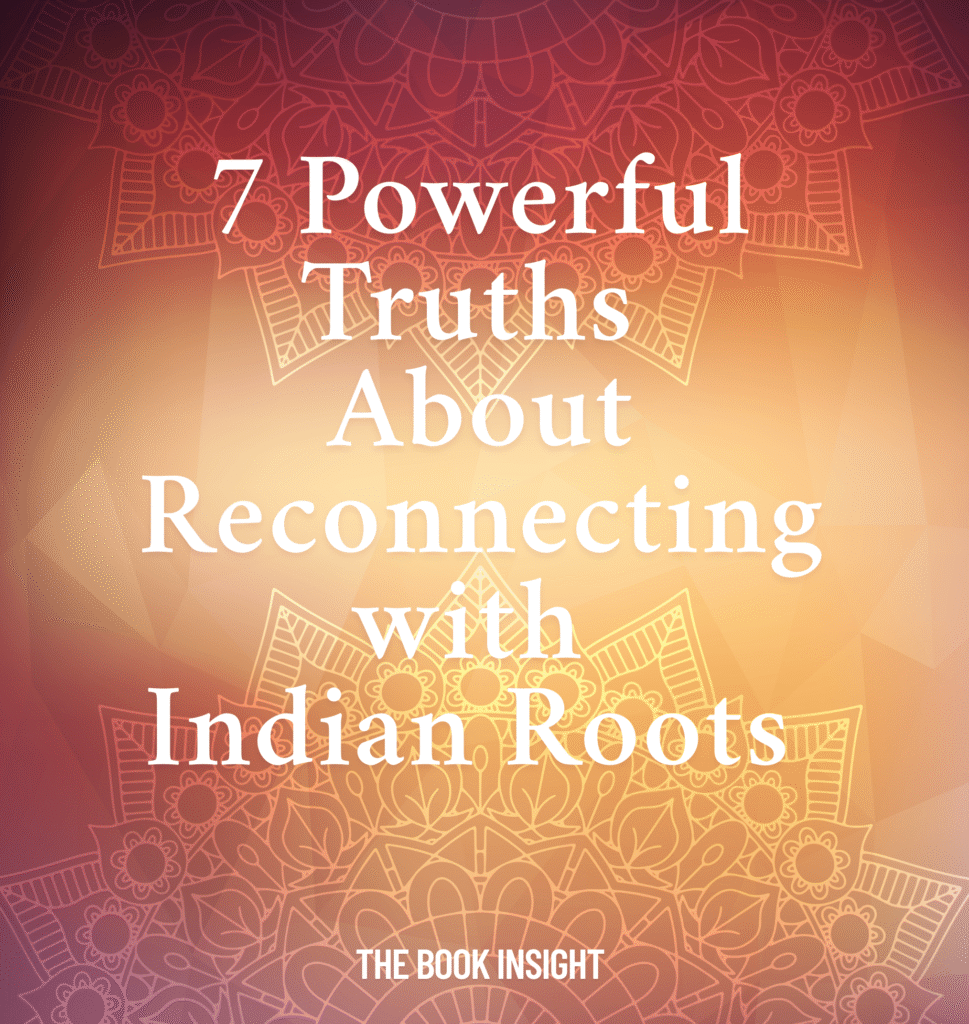Table of Contents
ToggleA Cultural Wake-Up Call: Are We Losing Our Roots?
A few years ago, during Diwali, I visited my childhood neighborhood expecting the familiar sights and sounds—devotional bhajans echoing through the lanes, children lighting diyas, and elders sharing stories of Lord Ram. But instead, I saw Instagram-themed decorations, Bluetooth speakers blaring party music, and barely any sign of Lakshmi Puja. It struck me deeply—something more than a tradition was fading.
Today, festivals are forgotten, rituals are skipped, and Gen Z seems more connected to Netflix, memes, and K-pop than to the teachings of the Vedas or the values of our ancestors. Every Mother’s and Father’s Day, timelines are flooded with photos and sentimental captions, but behind the filters lies a growing emotional disconnect.
Valentine’s Day is celebrated with passion—yet most people have no idea who Valentine was or why the day even exists. Meanwhile, our own cultural days like Guru Purnima, Vasant Panchami, or even Ram Navami often pass unnoticed.
Ironically, while many Indians mock or ignore their own traditions, foreigners are increasingly drawn to Indian culture—embracing yoga, Ayurveda, meditation, and spiritual philosophy. They see value where we are beginning to see embarrassment.
This isn’t about rejecting modernity or global ideas. It’s about losing the balance. And unless we begin reconnecting with Indian roots, we risk losing the very essence of who we are.
What Is Culture, Really?
Culture is not just about what we wear, eat, or celebrate. It’s far deeper.
Culture is a way of life shared by a group of people—built over centuries through shared values, languages, traditions, and beliefs.
It shapes our identity, nurtures emotional bonds, creates social trust, and connects us with our roots, land, and people.
Indian culture is not a monolith—it’s a living mosaic of philosophies, languages, art, rituals, science, music, and moral frameworks passed down through generations. It includes our emotional values, our spiritual lens, our family structures, and our relationship with nature and the divine.
In simpler terms:
- Culture is how we greet one another (Namaste).
- How we eat together (on a banana leaf, with hands).
- How we care for elders (seeing them as wisdom-holders, not burdens).
- How we live with nature (seeing rivers as mothers, not just water bodies).
When culture weakens, identity follows. And when identity is lost, imitation begins.
Why Are We Losing Indian Culture & Sanskriti?
India—the land of the Vedas, yoga, Ayurveda, and Sanatan Dharma—was once a beacon of knowledge and culture. But today, we’re witnessing a slow but alarming erosion of our values, traditions, languages, and identity. Here are 7 powerful reasons why:
1. Western Cultural Influence
Blind imitation of Western lifestyles has diluted our rich and diverse traditions. Materialism, nuclear families, dating culture, casual relationships, and party-driven lives are becoming the new “normal” for Gen Z.
Today’s youth often perceive Indian culture as outdated and uncool, preferring pop stars over philosophers and reels over rituals. But the Western lifestyle comes with its own problems—rising mental health issues, loneliness, and loss of community—something Indian culture historically protected us from.
We should learn from the West, not lose ourselves in copying it.
2. Colonial Legacy: The British Disconnection
The cultural disconnect didn’t start today—it was systematically engineered by the British. Lord Macaulay’s education system was designed to produce “a class of Indians in blood but British in taste, opinions, morals, and intellect.”
To rule India, they had to break its spine: its culture, spirituality, and education system.
- Indigenous Gurukuls were shut down (over 1,00,000 existed before British rule).
- Indian sciences and philosophy were mocked.
- Christian missionary influence grew, and conversion efforts were rampant.
- India’s image was reframed globally as a backward, superstitious society.
Even today, we are still mentally colonized—believing their knowledge is superior and ours is outdated.
3. Rise of Personal Greed & Individualism
India once thrived on values like dharma (duty), seva (service), and community living. But now, “What’s in it for me?” is the new mantra.
The collective fabric of society is weakening—neighbors don’t know each other, families are disintegrating, and people avoid helping others unless there’s personal gain.
Even parts of the entertainment industry promote self-centered narratives, replacing our community-first mindset with Western-style individualism.
4. Over-Modernization Without Balance
Technology is a gift—but when we forget our roots in the name of progress, it becomes dangerous.
We are blindly embracing modern gadgets, western fashion, and foreign ideologies—without grounding ourselves in our ancient wisdom.
Why not combine both?
Let us be a generation that uses smartphones, but also chants mantras.
Let us advance in AI, but also teach our children about our Itihasas (Ramayana & Mahabharata) and the Upanishads.
5. Flawed Education System
Today’s education is more about degrees and jobs, less about character and identity.
- Ancient Indian knowledge systems like yoga, Ayurveda, astronomy, Sanskrit grammar, and spiritual ethics are absent in school curriculums.
- Ethical training and dharmic values are missing.
- History textbooks often glorify invaders and downplay Indian achievements.
The British destroyed our Gurukul system—where students once learned discipline, logic, spirituality, mathematics, and respect. Post-independence, we failed to revive this.
In 1600s India, thousands of Gurukuls flourished—now, there are barely a handful.
6. Lack of Awareness & Pride in Our Culture
Many young Indians today feel ashamed of wearing traditional attire, speaking their native languages, or participating in rituals.
Why? Because media and modern education often portray Indian practices as “superstitions” while glorifying Western trends.
From the burning of Nalanda and Takshashila Universities to the decline of regional folk arts, our spiritual and cultural heritage was repeatedly attacked. After independence, generations grew up without being told the truth of our glorious civilization.
When you don’t know your roots, you cannot be proud of them.
7. Erosion of Language, Traditions & Arts
Languages like Sanskrit and many Indian dialects are vanishing. Folk music, dance, temple art, Vedic chanting, and even traditional food wisdom are being replaced by Western substitutes.
Did you know?
According to NASA, Sanskrit is the most suitable language for computers due to its structured grammar and phonetics.
Also, listening to Sanskrit shlokas and Vedic mantras has been shown in studies to stimulate the brain, reduce stress, and create a deep spiritual connection.
Yet today, most urban children can’t even pronounce basic shlokas, let alone understand them.
🌿 Our Responsibility
We are not writing this article out of nostalgia—we’re doing it to wake up this generation. The loss of culture is not inevitable. It’s a choice we’re making, knowingly or unknowingly.
But just as we lost it step-by-step, we can reclaim it step-by-step too.
What Studies and Trends Show About the Decline of Indian Culture?
India is changing—and not always for the better. Studies, surveys, and real-world trends show a disturbing pattern: a disconnect from our cultural roots. Below are some alarming signs we must not ignore:
1. Massive Rise in Indians Renouncing Citizenship
According to the Economic Times (August 2024), more than 2.13 lakh Indians gave up their citizenship just in 2023 alone.
From 2011 to 2023, over 17 lakh Indians have surrendered their Indian nationality.
The reasons may vary—economic opportunities, lifestyle, or dissatisfaction. But here’s a thought-provoking truth:
Before we leave this country behind, have we paused to remember that this is the land where gods, sages, and freedom fighters sacrificed their lives for dharma and independence?
This isn’t just geography. This is Bharat—a civilization rooted in karma, seva, and sanskar.
2. Decline in Use of Indian Languages at Home
Children today are often more fluent in English than in their mother tongues. In urban homes, traditional languages like Hindi, Tamil, Marathi, Bengali, Telugu, Rajasthani and many others are disappearing from daily life.
Why?
Because the modern mindset, especially among elite and urban parents, equates English with success—and native languages with backwardness.
Even worse, political agendas and linguistic rivalries—such as anti-Hindi sentiments in Karnataka—are dividing us further. Instead of promoting cultural unity, some use language as a weapon for personal gain.
3. Growing Adoption of Western Values: Individualism & Consumerism
The joint family system—a proud symbol of Indian unity—is rapidly disintegrating.
In metro cities and even villages:
- Youth now believe independence means leaving parents behind.
- Post-marriage, many couples move out, not for space, but to pursue a “stylish lifestyle.”
- A disturbing trend shows increasing numbers of elderly parents being sent to ashrams or old age homes—abandoned and forgotten.
This isn’t progress.
This is a heartbreaking shift from the values of Shravan Kumar, Ram, and Bharat—who treated parents like gods.
Indian culture teaches that:
“Matru Devo Bhava, Pitru Devo Bhava”
(“Mother is God, Father is God”)
But today, the West’s influence promotes a “me-first” mindset—career over character, convenience over commitment, self over family.
What Are We Becoming?
We must ask ourselves:
Are we evolving as a nation, or copying blindly—losing the very essence that once made India a land of sages, scholars, and saints?
Our temples may still stand, but our values are crumbling.
Let’s remember:
India’s strength has always been its balance of modernity with spirituality, freedom with responsibility, and progress with principles.
How Can We Reconnect with Indian Roots?
Reviving Indian culture isn’t about rejecting modern life—it’s about finding balance and staying connected to our spiritual and cultural DNA. Here’s how we can begin:
1. Reintroduce Indian Knowledge in Education
To truly respect our heritage, we must bring Indian knowledge systems back into the classroom. This includes:
- Teaching Sanskrit, Yoga, Vedas, Upanishads, and value education from a young age.
- Encouraging Sanskrit shloka music and devotional songs to awaken curiosity in children about our ancient wisdom.
- Promoting moral stories from Ramayana, Mahabharata, and other epics—not just comics or superficial material.
Progress already made:
India led the world by establishing International Yoga Day on June 21, and millions now practice it. But more needs to be done—and not just by the government. We, as citizens, must carry the torch forward.
2. Celebrate Festivals & Traditions Authentically
In today’s social media age, festivals are often reduced to aesthetic Instagram posts and dinner parties. We need to:
- Go beyond selfies and return to real celebration with rituals, family bonding, and cultural activities.
- Engage with neighbours, relatives, and friends to celebrate the way it used to be—with simplicity, devotion, and joy.
- Replace club nights and gift shopping with pujas, games, bhajans, and community service.
Let’s bring the soul back into our celebrations.
3. Speak and Encourage Indian Languages at Home
Your mother tongue is your emotional anchor—never be ashamed of it.
- Whether it’s Hindi, Tamil, Marathi, Rajasthani, Bengali, Telugu, or any regional language—speak it with pride.
- Parents should actively raise their children in native languages alongside English. It strengthens identity.
- Teach children the value of their linguistic heritage—it connects them to their ancestors, not just to exams.
What some call “old-fashioned,” we call rooted.
4. Rebuild Family and Community Bonds
The Indian family system is sacred. It teaches values like respect, patience, and care.
- Revisit the beauty of joint families—even if not physically under one roof, keep the emotional unity alive.
- Participate in local festivals, satsangs, community events, and guru-shishya traditions.
- Make time for elders. Don’t send them to ashrams. Sit with them. Learn from them. Love them.
Remember:
Freedom doesn’t mean isolation. It means responsibility with love.
5. Stop Believing False Narratives About India
We live in a data-driven war zone, where narratives are manipulated every day to distort Indian identity.
- Stay alert to biased media, fake history, and divisive content online.
- Validate what you read—explore real Indian texts, ancient history, and verified records.
- Be a protector of truth, not a blind consumer of viral trends.
Enemies of India once broke us through cultural invasion. Today, the attack is digital and ideological. Don’t fall for it again.
The Time to Awaken is Now
Reconnecting with Indian roots isn’t just about rituals—it’s about reviving our identity, standing up for truth, and preserving what makes Bharat eternal.
Let’s walk the path of dharma, vivek, and sanskriti—with pride, awareness, and action.
What Are the Challenges in Reconnecting with Indian Roots?
In today’s fast-paced, globalized world, several obstacles prevent us from reconnecting with our cultural identity. These challenges are both external and internal, and understanding them is the first step toward change.
• Peer Pressure and Social Media Influence
In the age of Instagram, trends and viral content shape our choices — from fashion to beliefs. Many young people feel embarrassed to follow traditions or speak their mother tongue, fearing judgment. Social media can often promote lifestyles that distance us from our roots and encourage superficial validation over deeper values.
• Globalization and Brain Drain
The exposure to global cultures and the aspiration to work abroad has created a mindset where everything “Western” is seen as superior. As multinational companies and foreign influencers dominate our media, our own traditions start feeling outdated to the younger generation.
• Misrepresentation of Indian Culture as “Regressive”
Time and again, Indian culture has been portrayed by some foreign media outlets as backward, orthodox, or irrelevant. This narrative is dangerous — it makes our youth question their identity and see their heritage with shame instead of pride. Even some Indians unknowingly adopt this mindset due to lack of awareness.
• Lack of Institutional Support and Political Will
Our education system often neglects Indian knowledge systems like Sanskrit, Yoga philosophy, Ayurveda, or ancient science. While some efforts have been made in recent years, there’s still a gap in how deeply and authentically our traditional wisdom is integrated into policy, academics, and public life.
Books That Can Help Shift Mentality
If we want to reclaim our cultural identity and understand the true depth of Indian civilization, we must begin by unlearning distorted narratives — and books are a powerful tool for this transformation. Below are some highly recommended books that open the mind and reconnect us with our roots:
1. The Beautiful Tree by Dharampal
A revealing look into India’s thriving indigenous education system before British colonization. This book breaks the myth that India was uneducated before Western influence.
2. Breaking India by Rajiv Malhotra
A deeply researched exposé on how internal divisions and foreign-funded narratives are being used to fracture Indian identity and culture.
3. Being Different by Rajiv Malhotra
Presents a Dharmic perspective that contrasts India’s pluralistic and spiritual worldview with Western materialism and individualism.
4. Why I Am a Hindu by Shashi Tharoor
Explores the philosophical richness, diversity, and tolerance inherent in Hinduism while challenging both blind faith and outright rejection.
5. India: A Sacred Geography by Diana Eck
An insightful exploration of how geography, mythology, and pilgrimage unite India into a sacred cultural landscape.
6. Awakening Bharat Mata (Edited by Swapan Dasgupta)
A collection of essays that explore nationalism, Indian identity, and the ideological battles shaping modern India.
7. The Bhagavad Gita (Recommended: Commentary by Swami Vivekananda)
A timeless spiritual guide that teaches duty, purpose, detachment, and the path to self-realization. A foundational text for anyone seeking deeper meaning and clarity in life.
Frequently Asked Questions (FAQ)
Q1: Why are so many Indians giving up their citizenship?
Many Indians are migrating for better economic opportunities, lifestyle, or personal freedom. However, this trend also reflects a growing disconnect from cultural identity and national pride. It’s crucial to reflect before leaving — not just economically, but emotionally and spiritually.
Q2: Isn’t adopting Western culture part of modernization?
Modernization doesn’t mean abandoning roots. We can adopt technology, innovation, and global exposure while still upholding our Indian values like family bonding, respect for elders, and spiritual wisdom. It’s about balance, not blind imitation.
Q3: Is speaking English at home a bad thing?
Not at all — English is a global language and important for opportunities. However, forgetting our mother tongue completely breaks our cultural continuity. Bilingualism is a strength — children can learn English while also being fluent in Hindi, Tamil, Marathi, or any regional language.
Q4: How is Indian culture misrepresented in media?
Often, Indian traditions are portrayed as regressive, superstitious, or outdated, especially in Western media or biased documentaries. This creates a false narrative. In truth, Indian culture emphasizes deep philosophy, scientific temper (as seen in Ayurveda, Yoga), and spiritual wisdom.
Q5: What can I do at an individual level to reconnect with Indian roots?
You can:
- Celebrate festivals authentically with family.
- Practice Yoga or read Indian scriptures.
- Speak your mother tongue at home.
- Read books that provide an Indian perspective.
- Validate information about India with real historical sources.
Small steps matter — they create a ripple effect in communities.
Q6: Are there any schools or systems already reviving Indian knowledge?
Yes, several schools and Gurukuls are incorporating Sanskrit, Yoga, moral education, and Vedic sciences. The Indian government has also promoted International Yoga Day and taken steps in the NEP (National Education Policy) to integrate traditional wisdom.
Q7: Isn’t it too late to revive Indian culture in this digital age?
It’s never too late. In fact, digital tools can help us preserve and spread our culture. Podcasts, YouTube channels, Instagram pages, and books are powerful platforms to teach and celebrate Indian values globally — especially to the youth.
Q8: How do I know which narratives about India are false or politically motivated?
Be critical and curious. Cross-check facts with Indian scriptures, historical texts, or trusted authors. Follow researchers and thinkers who present Indian perspectives. Don’t rely on single sources or viral trends for understanding complex issues.
My Experience
Recently, I found myself in a conversation with three colleagues discussing their desire to leave India and settle abroad. Two of them strongly believed that India cannot change and blamed the government for everything — from lack of opportunities to systemic inefficiencies. During their discussion, one of them posed a question that struck me deeply: “How long will we keep blaming the government for everything? Aren’t we also responsible for shaping this country?”
At that moment, I stayed silent, listening to their thoughts — thoughts influenced by media narratives and frustration. But later, their conversation sparked a deep realization within me: What have I done for my country? Have I fulfilled my responsibilities as a citizen? That was a turning point.
Since then, I’ve started contributing in my own way — writing articles like this to raise awareness, spark dialogue, and help shift the mindset that change is only the government’s duty. India isn’t just run by policies — it’s run by its people. We elect the government, we live in its cities and villages, and it’s our actions that ultimately shape the future. This reflection became the seed for this article.
Conclusion: The Change Begins with Us
India’s greatness doesn’t lie in political slogans — it lies in its people, its culture, and its values. We are standing at a crossroads — where we must choose between blind imitation and mindful evolution, between blaming and contributing.
Instead of only expecting change from the top, we must spark change within ourselves — in our homes, in our values, in how we raise our children, how we celebrate our culture, and how we speak about our nation. The mindset that “someone else will fix it” is what’s holding us back.
Every small action counts — speaking your mother tongue proudly, participating in community events, celebrating festivals authentically, learning from Indian texts, and most importantly, thinking critically and responsibly.
India doesn’t need us to be perfect. It needs us to be aware, involved, and rooted.
Let’s stop asking, “What has India done for me?”
And start asking, “What am I doing for India?”
Let’s Stop Blaming and Start Building.
Be the change. Start the conversation in your family, workplace, or school.
Read one of the recommended books.
Think deeply. Speak consciously. Act responsibly.
Together, we can rebuild the Indian spirit — one thought at a time.
If this article resonated with you, you may also find Atomic Habits insightful — it explains how small individual actions can lead to meaningful change, both personally and socially.”



